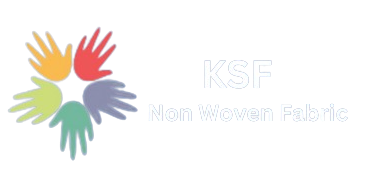AGRICULTURE USE FABRIC
AGRICULTURAL USES OF NONWOVEN FABRICS
Revolutionizing Agriculture: The Versatility of Nonwoven Fabrics
Nonwoven fabrics have emerged as indispensable materials in the realm of agriculture owing to their multifaceted benefits encompassing versatility, durability, and cost-effectiveness. These fabrics, crafted through a process that doesn’t involve weaving, are finding an expanding array of applications across various agricultural practices, revolutionizing traditional methods and enhancing overall productivity.
Crop Protection:
- Frost Protection: Nonwoven fabrics act as protective covers to shield crops from frost and cold weather, extending the growing season and reducing crop damage.
- Pest and Insect Control: These fabrics create barriers against insects and pests, reducing the need for chemical pesticides and promoting healthier crop growth.
Weed Control:
- Nonwoven fabrics are used as ground covers to suppress weed growth by blocking sunlight, which helps in maintaining a weed-free environment around crops without the use of herbicides.
Moisture Retention:
- Mulch Fabrics: They are used as mulch to retain soil moisture, reduce evaporation, and maintain a stable temperature around plant roots, promoting healthy plant growth.
- Soil Stabilization: Nonwoven fabrics help in stabilizing soil, preventing erosion, and maintaining soil structure, especially in areas prone to heavy rain or wind.
Greenhouse Shading and Insulation:
- Nonwoven fabrics are used in greenhouses to provide shading and insulation, helping to regulate temperature and light conditions to create an optimal environment for plant growth.
Plant Germination:
- Seed Germination Blankets: These fabrics are used to cover seeds after planting, providing a favorable microclimate for germination by retaining moisture and warmth while protecting seeds from birds and pests.
Root Control:
- Nonwoven fabrics are used in the production of root control bags or mats, which prevent root overgrowth and help in the management of root systems, particularly in nursery plants and container gardening.
Hydroponic Systems:
- Nonwoven fabrics serve as a growing medium in hydroponic systems, providing support and stability for plants while facilitating water and nutrient distribution.
Harvesting Aids:
- Nonwoven fabrics are used to make harvesting nets and mats, which help in collecting fruits and vegetables efficiently, reducing damage and contamination during the harvesting process.
Nursery and Landscaping:
- Seedling Protection: Nonwoven fabrics are used to protect young seedlings from harsh weather conditions and pests, ensuring better survival rates and healthy growth.
- Landscape Fabric: They are used in landscaping to control weeds and enhance the aesthetic appeal of gardens and public spaces by providing a clean and tidy appearance.
Erosion Control:
- Nonwoven fabrics are used in erosion control blankets to protect soil from wind and water erosion, particularly on slopes, riverbanks, and construction sites.
Nonwoven fabrics offer numerous benefits in agriculture, including improved crop protection, enhanced soil and moisture management, and increased efficiency in planting and harvesting processes. These applications contribute to sustainable agricultural practices and higher crop yields.


